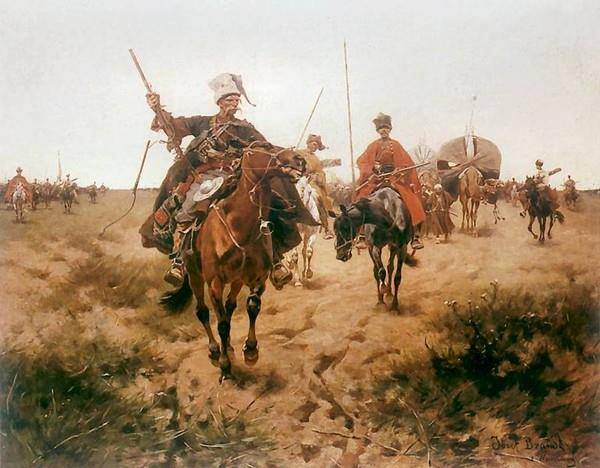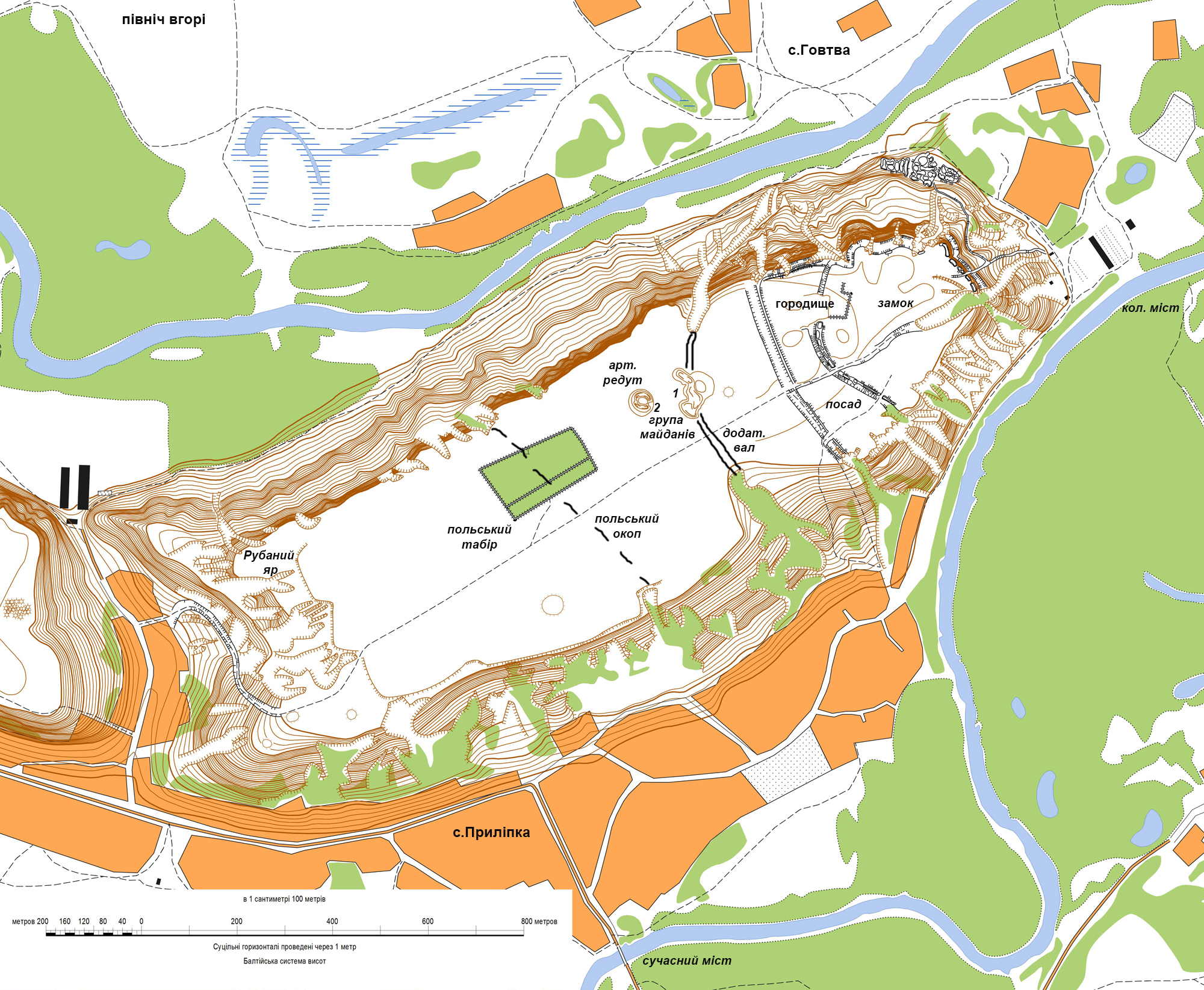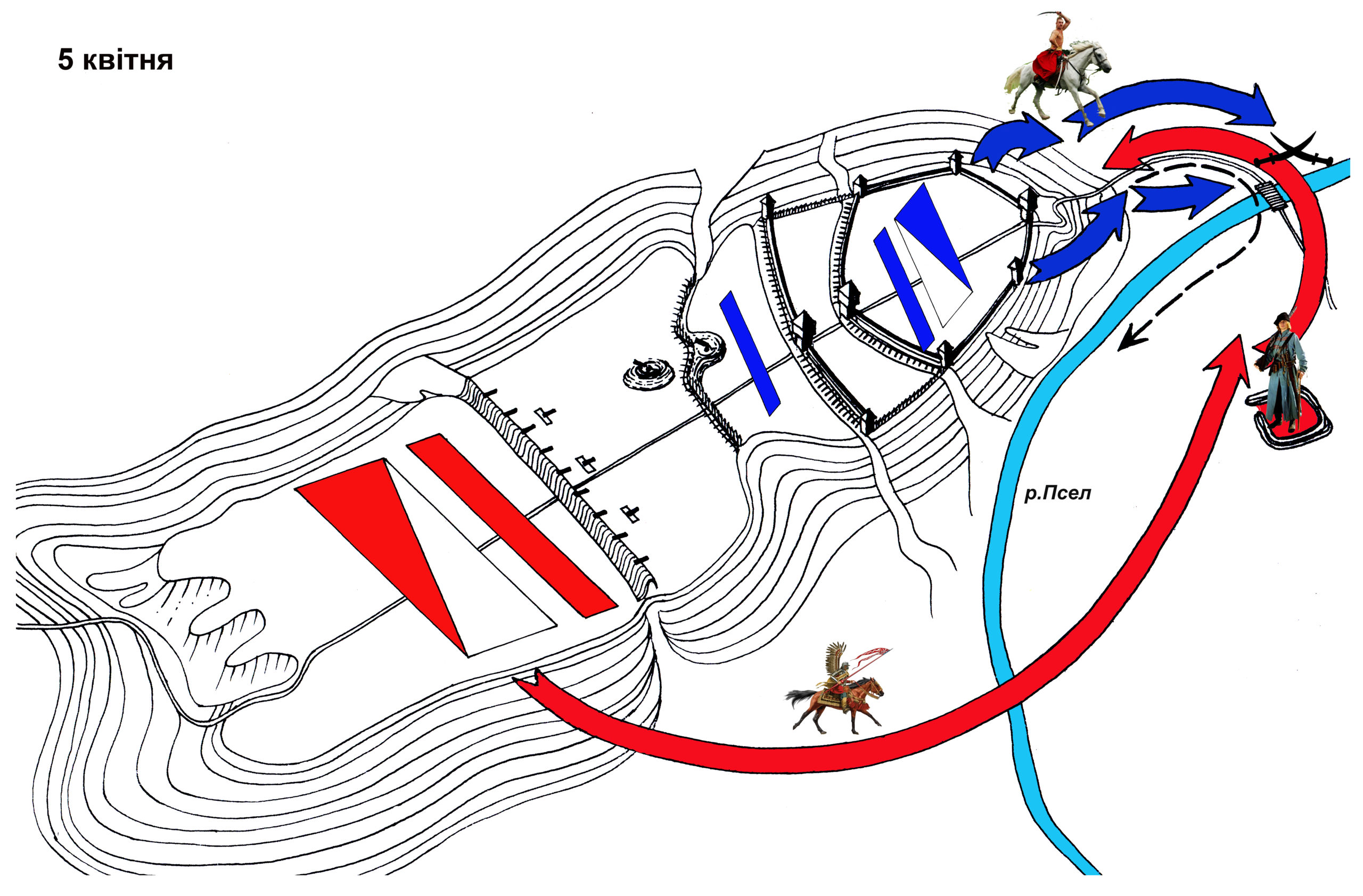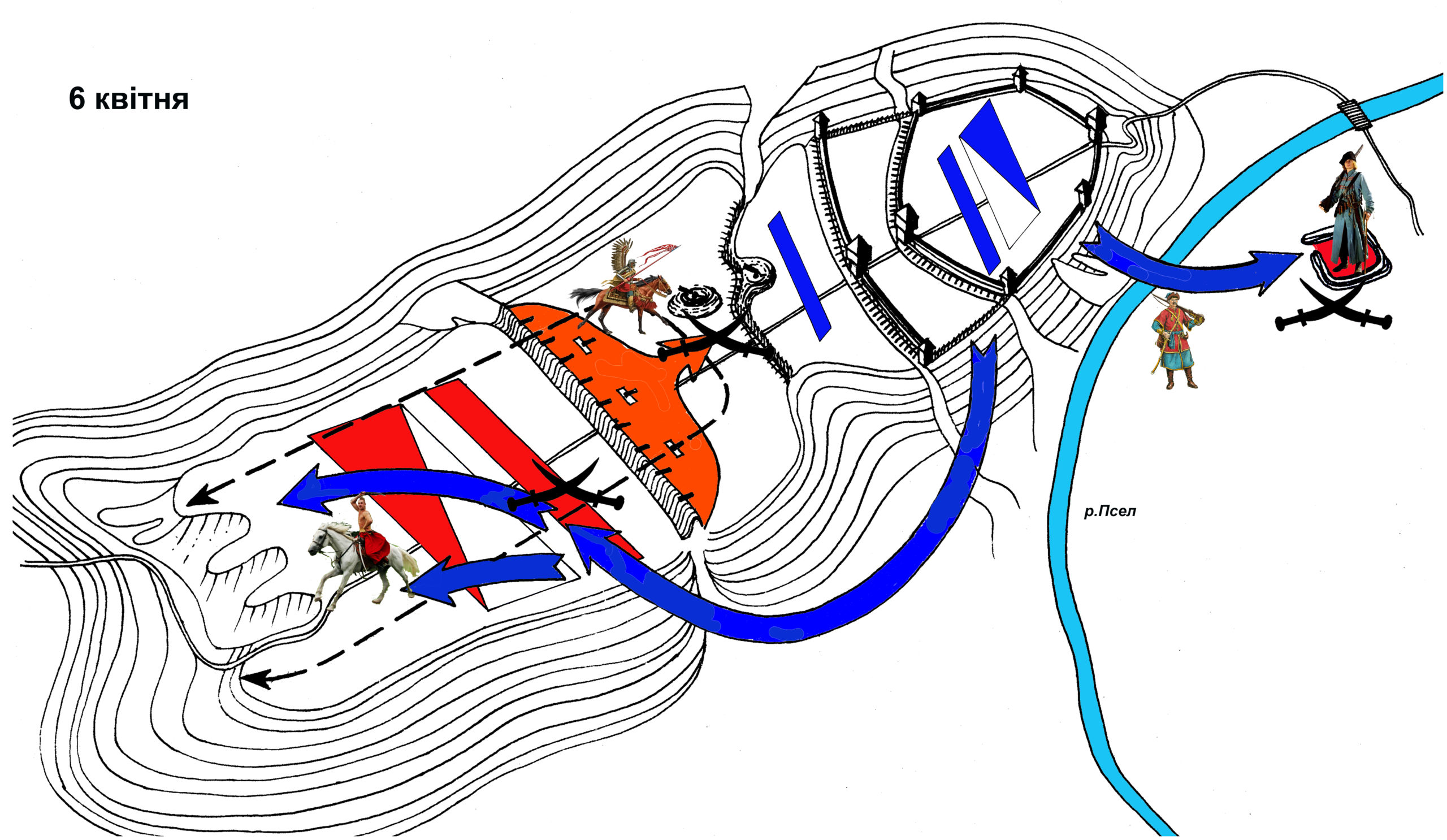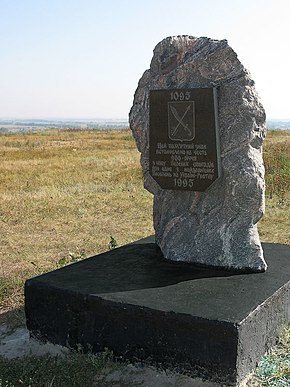
The Great Storm (the national liberation war of Bohdan Khmelnytskyi) was preceded by the Golden Decade of the Polish-Lithuanian Commonwealth, which in turn was preceded by a series of wars of the Cossacks against the Poles for their rights. The last attempt of the Cossacks before the “storm” was the Cossack uprising, which for the third time took place here in Poltava region.
The military campaign of 1638 in Poltava region was a continuation of the violent events of the previous 1637, when an uprising led by Pavliuk swept through Ukraine, which the Polish authorities had traditionally tried to drown in blood. The following struggle of the Cossacks for their rights is inseparably linked with the name of one of the brightest Cossack leaders Yakiv Ostrianyn, who left a deep trace in national history.
The Peasant-Cossack army advanced from Zaporizhzhia in the second half of March 1638, planning to cut off the szlachta detached units located on the Left Bank of Ukraine from the Right Bank and defeat them. After defeating the szlachta military posts with the support of the local population and occupying the crossings across the Dnipro River, the rebels decided to wait for reinforcements by stopping in Hovtva. This city was located between the Psel and Hovtva Rivers, was surrounded by forests and swamps, which contributed to the defense arrangement. The Cossacks fortified the city castle and created a high earth bank between the banks of the rivers and set guns on the hills. There is rather interesting description of the defense arrangement in the Sh. Okolskyi’s diary: “Thousands of people were stationed on the banks, several hundred were stationed to guard gates and towers, and artillery was placed in the front line. Also wizards and witches were placed on the hills to cast spells on gunpowder, guns, air and fire”.
The Crown Army, led by Stanislaw Potocki, quickly marched to Hovtva. After building an earth bank against the rebels’ trenches, on 25th April (5th May) they attempted to seize the bridge over the Psel River against the city’s main gate, but were stopped by intensive artillery fire. At that time, the detached unit of Cossacks went behind the lines, blocking the way to the retreat with logs.
The detached unit of German mercenaries (about 2,000) forced the Psel River and built the trench lines to the night. The Cossacks crossed the river unnoticed at night, and in the morning they defeated this detached unit, which was unable to request reinforcements. At the same time, they bypassed the main Polish troops at the bottom of the mountain, and struck them from several directions in the morning. So the next day the advantage of the Cossacks became obvious, and the Crown army, having lost about 3 thousand people, began to flee in the direction of Lubny.
The research of the complex of monuments on Shar-Hora use of the most detailed description of the eyewitness diary Sh. Okolskyi, allowed V. Sherstiuk to claim that the battle of Hovtva in 1638 was one of the few events of a similar plan, which can be localized quite accurately on the site. Comparison of historical documents with archaeological antiquities and artefacts made it possible to reconstruct in sufficient detail not only the course of the Battle of Hovtviansk in 1638, but also to reflect its events in the area, to find and correlate individual items of the complex on Shar-Hora and its edge of the ups and downs of this historic event.
Thus, the location of the additional breastwork, created by the Cossacks in front of the fortifications, is localized between two large ravines, which with their peaks cut quite deep into the mountain massif, thus reducing the potential line of defence. On the junction axis of the ravines’ tops is the site “Rozryta Mohyla”, which was probably included in the system of these additional fortifications.
Similarly, according to Sh. Okolskyi, the kurgan in front of the breastwork, which the Cossacks “turned into a strong redoubt” to increase the defensive force, as it was the only place of approach from the field, is reliably identified with the square No. 2 of the same group. The Polish camp was probably also located on the territory of Shar-Hora. According to Sh. Okolskyi, the crown cavalry stood on the mountain as “a living stronghold, helmet to helmet”, and the infantry, as usual, built for themselves a small “trench in the form of a parapet” for firing rifles near the artillery. Following the example of the Cossacks, the last field fortification was “made from river to river”. The researchers came to the conclusion that the main trench of the Polish army lay approximately on the site of the current cemetery (300-400 m from the Cossack fortifications), where the deepest ravines are also located. Numerous military artefacts from Shar-Hora plateau also evidence in favour of the correct reconstruction of the battlefield.
- Liamkin managed to find the remains of fortifications in Buniakivka village on the left bank, which were later connected with the traces of defensive redoubts of a detached unit of German mercenaries.
According to D. Vyrskyi, Ya. Ostrianyn was a native of these lands, which allowed him to so skilfully manage the actions of his troops.
The Great Storm (the national liberation war of Bohdan Khmelnytskyi) was preceded by the Golden Decade of the Polish-Lithuanian Commonwealth, which in turn was preceded by a series of wars of the Cossacks against the Poles for their rights. The last attempt of the Cossacks before the “storm” was the Cossack uprising, which for the third time took place here in Poltava region.
The military campaign of 1638 in Poltava region was a continuation of the violent events of the previous 1637, when an uprising led by Pavliuk swept through Ukraine, which the Polish authorities had traditionally tried to drown in blood. The following struggle of the Cossacks for their rights is inseparably linked with the name of one of the brightest Cossack leaders Yakiv Ostrianyn, who left a deep trace in national history.
The Peasant-Cossack army advanced from Zaporizhzhia in the second half of March 1638, planning to cut off the szlachta detached units located on the Left Bank of Ukraine from the Right Bank and defeat them. After defeating the szlachta military posts with the support of the local population and occupying the crossings across the Dnipro River, the rebels decided to wait for reinforcements by stopping in Hovtva. This city was located between the Psel and Hovtva Rivers, was surrounded by forests and swamps, which contributed to the defense arrangement. The Cossacks fortified the city castle and created a high earth bank between the banks of the rivers and set guns on the hills. There is rather interesting description of the defense arrangement in the Sh. Okolskyi’s diary: “Thousands of people were stationed on the banks, several hundred were stationed to guard gates and towers, and artillery was placed in the front line. Also wizards and witches were placed on the hills to cast spells on gunpowder, guns, air and fire”.
The Crown Army, led by Stanislaw Potocki, quickly marched to Hovtva. After building an earth bank against the rebels’ trenches, on 25th April (5th May) they attempted to seize the bridge over the Psel River against the city’s main gate, but were stopped by intensive artillery fire. At that time, the detached unit of Cossacks went behind the lines, blocking the way to the retreat with logs.
The detached unit of German mercenaries (about 2,000) forced the Psel River and built the trench lines to the night. The Cossacks crossed the river unnoticed at night, and in the morning they defeated this detached unit, which was unable to request reinforcements. At the same time, they bypassed the main Polish troops at the bottom of the mountain, and struck them from several directions in the morning. So the next day the advantage of the Cossacks became obvious, and the Crown army, having lost about 3 thousand people, began to flee in the direction of Lubny.
The research of the complex of monuments on Shar-Hora use of the most detailed description of the eyewitness diary Sh. Okolskyi, allowed V. Sherstiuk to claim that the battle of Hovtva in 1638 was one of the few events of a similar plan, which can be localized quite accurately on the site. Comparison of historical documents with archaeological antiquities and artefacts made it possible to reconstruct in sufficient detail not only the course of the Battle of Hovtviansk in 1638, but also to reflect its events in the area, to find and correlate individual items of the complex on Shar-Hora and its edge of the ups and downs of this historic event.
Thus, the location of the additional breastwork, created by the Cossacks in front of the fortifications, is localized between two large ravines, which with their peaks cut quite deep into the mountain massif, thus reducing the potential line of defence. On the junction axis of the ravines’ tops is the site “Rozryta Mohyla”, which was probably included in the system of these additional fortifications.
Similarly, according to Sh. Okolskyi, the kurgan in front of the breastwork, which the Cossacks “turned into a strong redoubt” to increase the defensive force, as it was the only place of approach from the field, is reliably identified with the square No. 2 of the same group. The Polish camp was probably also located on the territory of Shar-Hora. According to Sh. Okolskyi, the crown cavalry stood on the mountain as “a living stronghold, helmet to helmet”, and the infantry, as usual, built for themselves a small “trench in the form of a parapet” for firing rifles near the artillery. Following the example of the Cossacks, the last field fortification was “made from river to river”. The researchers came to the conclusion that the main trench of the Polish army lay approximately on the site of the current cemetery (300-400 m from the Cossack fortifications), where the deepest ravines are also located. Numerous military artefacts from Shar-Hora plateau also evidence in favour of the correct reconstruction of the battlefield.
- Liamkin managed to find the remains of fortifications in Buniakivka village on the left bank, which were later connected with the traces of defensive redoubts of a detached unit of German mercenaries.
According to D. Vyrskyi, Ya. Ostrianyn was a native of these lands, which allowed him to so skilfully manage the actions of his troops.
Read moreПам’яткоохоронна інформація
Monument protection information
Наукові публікації
Scientific publications
Фотогалерея
Gallery
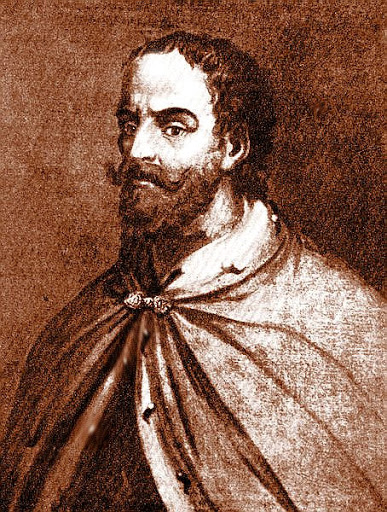
Ймовірний портрет гетьмана Якова Острянина (?-1641). 1638 р. Копія кінця XIX ст. з портрета XVII ст. З відкритих джерел
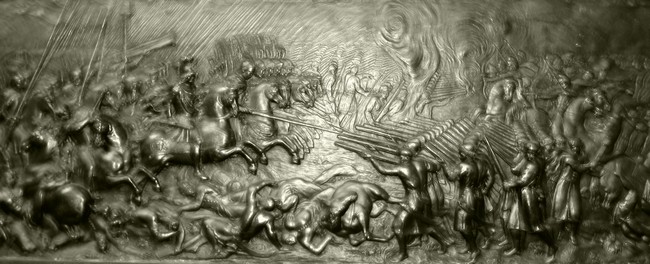
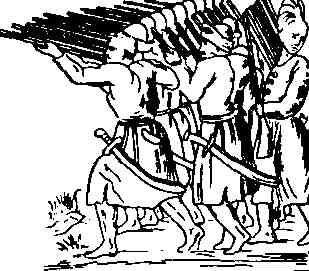
Бойовий стрій козацької піхоти. Прорисовка з барельєфу на саркофазі Яна Казимира із сценами битви під Берестечком (абатство Сен-Жермен, Париж).
